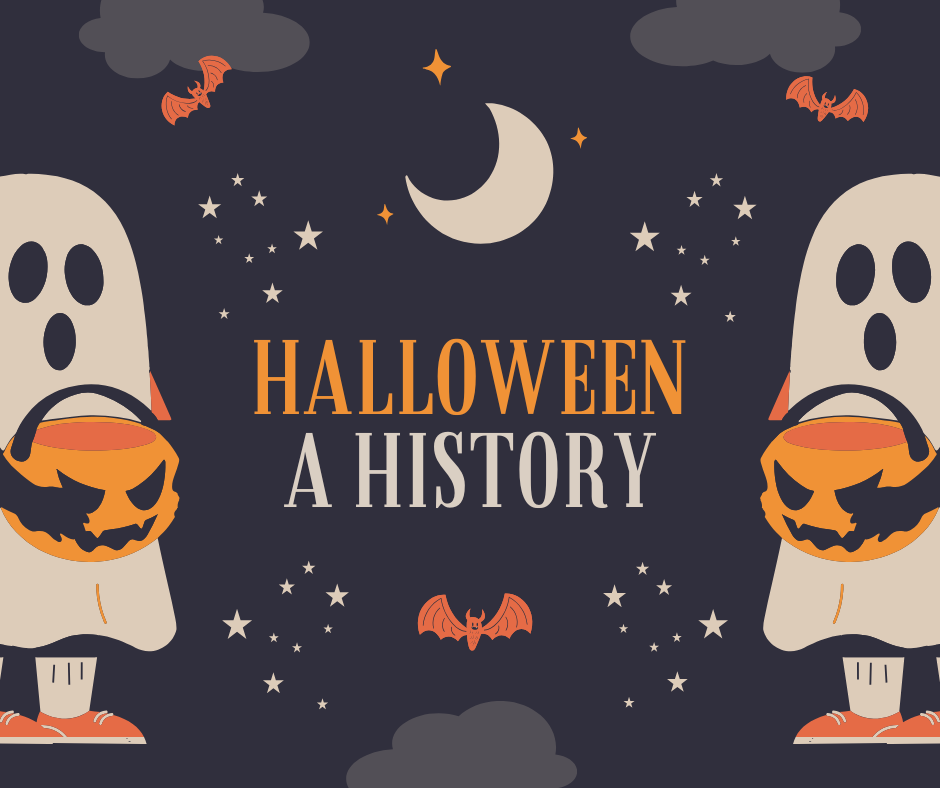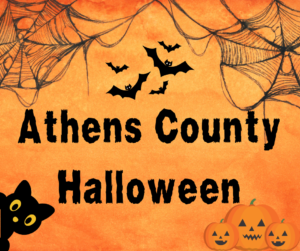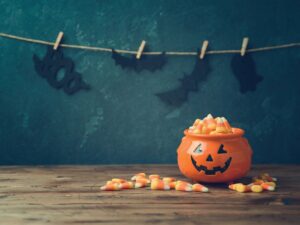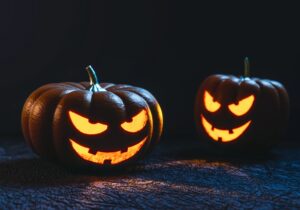A Brief History of the Holidays: Halloween

Halloween is celebrated each year on October 31, and is typically a time of costumes, candy, and fun or spooky traditions. Its origins can be traced back to over 2,000 years ago when the Celts celebrated Samhain.
Their New Year’s Day was November 1, and Samhain marked the end of summer and the harvest season, and began the cold winter season. It was believed the boundary between the living and the dead was blurred and ghosts roamed. A huge sacred bonfire was built where sacrifices of crops and animals were burned. Everyone would gather around dressed in costumes of animal heads and skins to tell stories and fortunes. Once the celebration was over they would take the fire back home to light their hearth to keep them warm and protected over the long winter.
Once the Roman Empire conquered the area, they combined two of their festivals with the traditions of Samhain. Feralia, which was held in late October commemorated the passing of those lost, the second was Pamona, named for the Roman goddess of fruit and trees. One of her symbols is an apple, which is likely the origin of bobbing for apples at Halloween.
Pope Boniface IV dedicated the Catholic feast of All Martyrs Day in the year 609 in honor of all Christian martyrs. Pope Gregory III later moved this celebration to November 1, and it became known as All Saints’ Day, remembering all the Saints and martyrs. By the year 1,000 the church implemented All Souls’ Day to honor the dead, in time this celebration replaced Samhain for many. There were still many similarities, such as bonfires, parades, and dressing up in costumes, which were now of Saints, angels, and devils. The All Saint’s Day was also referred to as All-hallows or All-hallowmas, with the traditions Samhain practiced the night before which became known as All-Hallows Eve and, eventually, Halloween.
When the United States was still young, the initial customs of Halloween were more ridged due to the Protestant belief systems held by many at the time. Some areas of the States still celebrated with “play parties” which celebrated the harvest. The neighborhood would gather to tell stories of those passed, and to dance and sing. Some of these celebrations also included ghost stories and mischief making.
It wasn’t until the late 1800s America would start to change the celebration into what we know today. The celebrations moved to a more community minded style, and away from ghosts, pranks, and its ties to witchcraft. These parties focused on games, seasonal foods, and fun costumes, and parents were encouraged to remove decorations and themes considered frightening. By the beginning of the 20th century Halloween had lost most of its superstition and religious themes.
Due to the large number of children born during the baby boom, many of these celebrations moved from community centers to the classroom or the home to accommodate more during the festivities. Sometime between 1920-1950 the practice of trick-or-treating was revived and was seen as a relatively inexpensive way for the whole community to participate in the fun.
Since then, the traditions have continued to grow, and now Halloween is the second largest commercial holiday in the United States, only behind Christmas. In 2023 Americans spent $12.2 billion on the holiday, including costumes, decorations, and of course, candy.
There’s much more to know about the traditions of Halloween and how they started in our country, or around the world. This is only a brief overview, and definitely does not include everything. If you are interested in sharing your family’s favorite Halloween traditions, fun facts, or photos please send them to [email protected].
Halloween Fun Facts:
-1/4 of all the candy sold in the U.S. annually is purchased for Halloween.
-One in five adults usually pretend not to be home on Halloween
-Every 19 years, there’s a full moon on Halloween
-Sugar rationing during World War II paused trick-or-treating
-Jack-o-Lanterns are attributed to an Irish man named Stingy Jack, according to a legend
-Ohio is known for having the most haunted house events of any state









